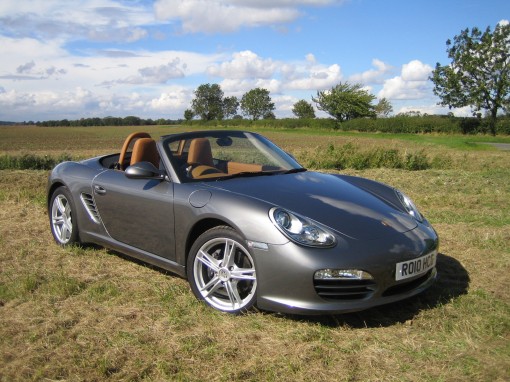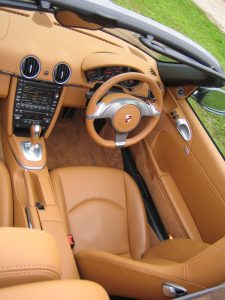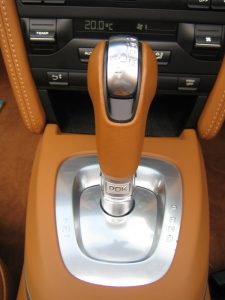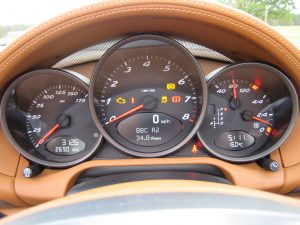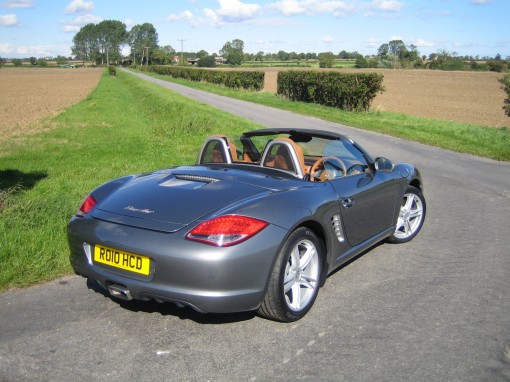Proof of Porsche pudding is in the driving
Classic styling, mixed with the latest technology means Porsche’s Boxster is hard to beat. wheelworldreviews editor DAVID HOOPER explains why it is still one of his all-time favourites.
SOME say that Porsche’s designs are dated, never change much and are a throwback to the 1960s.
As far as I’m concerned, those people can say and think whatever they like. I really don’t care – because whenever I drive a Porsche, and sadly it’s not as often as I would like it to be, I am quickly reminded of just how special these cars are.
Rather than dated, I would say their design is timeless. A classic. And I love classic cars. But whatever you may think of the way the car looks, the proof of the pudding is in the driving experience, and in a Porsche Boxster, it really doesn’t get any better. Beautifully balanced, the car just feels right. The steering is perfectly weighted and the build quality is second to none.
All the switchgear feels robust, the instrumentation is clear and easy to read, even at full tilt, but perhaps best of all, it’s actually quite practical.
With a “boot” at either end of the car, a small flat one at the back, and a tardis-like deep one at the front, where you would usually expect to find an engine, it has far more luggage space than any other two-seater sports car I can think of – which leaves the small matter of the engine.
Itself as much of a classic as the design of the car, the Boxster’s 2.9-litre six-cylinder engine sits snugly behind the passenger compartment in the middle of the car. Driving the rear wheels, it makes a glorious sound when you press the loud pedal, a sound which can quite literally makes the hairs on the back of your neck stand up.
It doesn’t matter if the roof is up or down, it’s addictive to listen to, particularly as the rev counter, on the large centre dial on the dashboard, swings quickly around the dial towards the red line.
The car I’ve been testing was priced at £45,483 – just shy of £10,000 more than this model’s basic price of £35,510, thanks to a generous collection of extras.
Among those extras, at £1,962, was the twin-clutch, 7-speed gearbox, called the Porsche Doppelkupplungsgetreibe double clutch gearbox – I’ll let you attempt the pronunciation!
As far as the driver is concerned, it works in a similar was as a traditional automatic, but its complicated twin clutch system means that regardless of which gear the car is in, the next one is pre-engaged and ready to take over, resulting in faster changes, and lower fuel consumption than can be achieved with a traditional automatic box with a torque converter.
The gearbox can be left to look after the gear changes for you, which it does very well, or the driver can intervene and take control, either by nudging the gear lever back or forth, or by using either of the buttons on the steering wheel – which is where my only criticism of the car is to be found. To change down, you press the button towards you and to change up, you use your thumb to press it away from you. The system works well enough, and you can use either button on the left or right side of the wheel, but could I remember which way to press the button? When I was driving the car quickly and concentrating on the road, I couldn’t, which resulted in a few missed gear changes. For me it would be better and more logical if they worked the opposite way round. Perhaps the optional paddle shift for the PDK gearbox that fits paddles behind the steering wheel would be preferable.
Press the throttle pedal with some intent from a standing start, and 62mph flashes past in just 5.6 seconds, while the car’s top speed is a potential 162mph, but it’s not really about top speed. How the car handles is far more important, and this one is among the best. It changes direction with poise and accuracy, and never feels anything but composed, even when you begin to test the limits of its grip, so long as you do it properly.
This is the latest generation of the Boxster which features a few subtle changes, the most noticeable being the LED daytime running lights. Another attraction for would-be buyers will be the longer manufacturer-backed warranty they will get, up from two years to three, with no mileage restriction during that time.
Refinements to the engine now also provide impressive economy. I took the car to Wetherby and was surprised and impressed to see an average fuel consumption figure of around 36mpg at motorway speeds. Around town, as you would expect, it was less, at around 22mpg.
The tan leather interior seemed to divide opinion, but I liked it and thought it suited the car, but at £2,841 it is a pricey option. The superb hard drive based touch screen display doesn’t come cheap either, but for the £2,000 asking price, you get a good sat nav system, with clear displays, and intuitive control of your radio, phone, trip computer and MP3 player, when it’s connected.
So as I handed back the keys, sad though it was, I couldn’t help but smile. The Boxster is good – very good – and still one of my favourites. And so long as you don’t go mad ticking the options boxes, it’s surprisingly affordable.
Rating: 





THE VITAL STATISTICS
MODEL: Porsche Boxster.
BOXSTER RANGE: From Boxster (£35,510) to Boxster Spyder (£45,603).
ENGINE: 2,893cc, 255bhp six-cylinder engine, driving rear wheels through 7-speed PDK gearbox.
CO2 EMISSIONS: 214g/km.
PERFORMANCE: Top speed 162mph. 0-62mph in 5.6secs.
ECONOMY: City: 20.5mpg.
Country: 43.5mpg.
Combined: 31mpg.
Fuel tank: 54 litres.
WARRANTY: 3 years/Unlimited miles.
PRICE: £35,510.
WEBSITE: www.porsche.co.uk

